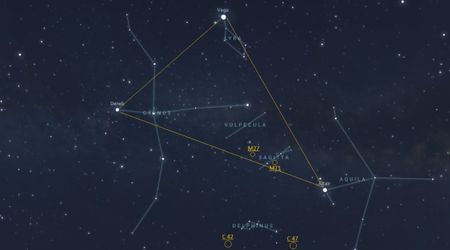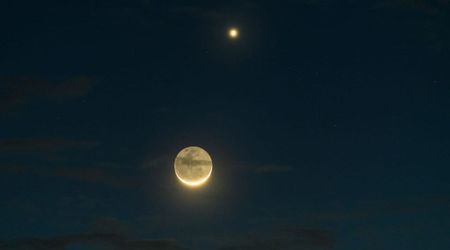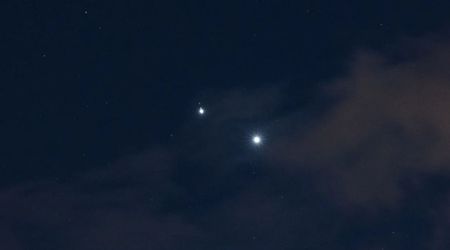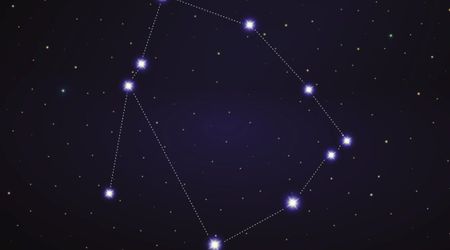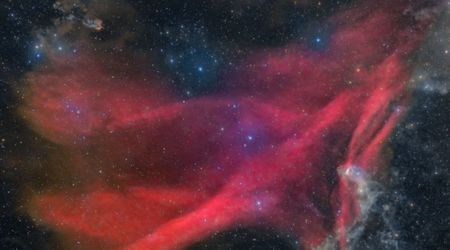Astronomers photograph sculptor galaxy in a thousand colors after observing it for 50 hours straight

Astronomers have released a remarkable new image of the Sculptor Galaxy, also known as NGC 253, revealing intricate galactic systems in striking detail. Located approximately 11 million light-years away, the galaxy is depicted in thousands of colors, offering a stunning view of its complex structure, per Space.com.

The groundbreaking image was captured using the Multi Unit Spectroscopic Explorer (MUSE) instrument at the Very Large Telescope (VLT) in Chile. This detailed observation is expected to provide critical insights into the poorly understood complexities of galactic systems. "The Sculptor Galaxy is in a sweet spot," stated Enrico Congiu, team leader of the Universidad de Chile, in a statement. "It is close enough that we can resolve its internal structure and study its building blocks with incredible detail, but at the same time, big enough that we can still see it as a whole system."

This extensive image, covering 65,000 light-years of the 90,000-light-year-wide galaxy, required a significant undertaking: 100 exposures collected over 50 hours of MUSE observing time. This considerable effort was justified by the unparalleled detail unveiled in the Sculptor Galaxy VLT image. Kathryn Kreckel, a team member from Heidelberg University in Germany, highlighted the image's versatility, noting, "We can zoom in to study individual regions where stars form at nearly the scale of individual stars, but we can also zoom out to study the galaxy as a whole."

Initial examination of the image has already yielded significant findings for the team. Researchers have identified 500 new planetary nebulae within the image. These are shells of gas and dust ejected from stars, similar to our Sun, after they "die" and expand into a "puffed out" red giant phase. Such detections are particularly extraordinary, as they are relatively rare beyond the Milky Way and its immediate galactic neighbors. "Beyond our galactic neighborhood, we usually deal with fewer than 100 detections per galaxy," said Fabian Scheuermann, a team member and researcher at Heidelberg University.
🪐 WOW! Astronomers Capture Most Detailed Image of Sculptor Galaxy — 11 Million Light-Years Away
— NEXTA (@nexta_tv) June 19, 2025
After 50 hours of observations and 100+ exposures, scientists revealed a stunning image packed with cosmic detail.
🔭 What they found? 500 planetary nebulae — glowing gas clouds… pic.twitter.com/s3aEioOVLl
Despite their misleading name, planetary nebulae have no connection to planets. However, they could prove invaluable for future research, as astronomers can use them for distance measurements. Finding the planetary nebulae allows us to verify the distance to the galaxy — a critical piece of information on which the rest of the studies of the galaxy depend," explained Adam Leroy, a team member and researcher at Ohio State University.
A stunning new image of the Sculptor Galaxy, located 11 million light-years away, painted in thousands of colors by the VLT, reveals the intricacies of galactic systems. https://t.co/ur4PCtHfBB
— SPACE.com (@SPACEdotcom) June 18, 2025
The team's work with this image of the Sculptor galaxy is far from over. The next crucial step for the astronomers involves exploring how hot gas flows through NGC 253, specifically examining how its composition changes and contributes to the formation of new stars. "How such small processes can have such a big impact on a galaxy whose entire size is thousands of times bigger is still a mystery," Congiu concluded. The team's groundbreaking research was published on June 18 in the journal Astronomy and Astrophysics.
For over two decades, the Very Large Telescope (VLT) has served as the European Southern Observatory's (ESO) leading astronomical instrument. Despite its singular name, the VLT is not a single telescope but rather comprises four 8.2-meter (26.9 feet) telescopes complemented by four 1.8-meter (5.9 feet) Auxiliary Telescopes. These powerful instruments can operate independently or be combined to form what astronomers call an optical interferometer, significantly increasing their light-gathering capability beyond that of individual telescopes alone, per Space.com.
